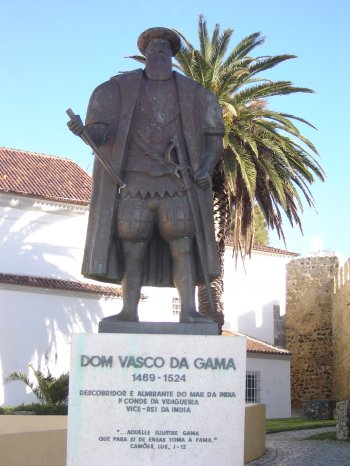Explore the best places
Heritage in Portugal
Edifício do Largo António Joaquim Correia
- heritage
Largo António Joaquim Correia, 20-21
2900-231, Setúbal


Arco da Rua Arronches Junqueiro
- heritage
Rua Arronches Junqueiro
2910, Setúbal
Ancient sculpture of Santa Iria protected by a metallic covering. This pillar marks the place where, accordingly to the tradition, the sarcophagus of the martyr Santa Iria came to rest.

Edifício da Avenida dos Combatentes da Grande Guerra
- heritage
Avenida dos Combatentes da Grande Guerra, 51-53
2900-329, Setúbal

Edifício da Avenida dos Combatentes da Grande Guerra
- heritage
Avenida dos Combatentes da Grande Guerra, 32-36
2900-328, Setúbal

Estátua de Dom Vasco da Gama
- heritage
Largo Muro da Praia
7520, Sines
A statue that honours Vasco da Gama, the first man that travelled to India by sea. He connected Europe and Asia at the end of the 15th century and has an important place in the world's history. He was born in Sines.

Edifício da Rua Arronches Junqueiro/Rua António Granjo
- heritage
Rua Arronches Junqueiro
2900, Setúbal

Capela da Misericórdia de Sines
- heritage
Praça Tomás Ribeiro
7520, Sines
An austere temple. It has a longitudinal plan, compoised of a nave and a narrower high altar with the sacristy on the left side.

Aqueduto de Setúbal
- heritage
Estrada dos Arcos e Alferrara
2900, Setúbal
Aqueduct ordered by d. João II, presenting to stores of arcades. It is also called Aqueduto da Estrada dos arcos or Aqueduto dos Arcos.

Muralhas de Setúbal
- heritage
Centro Histórico de Setúbal
2900, Setúbal
Setúbal was once surrounded by two belts of walls. The first, called Muralha Afonsina for being constructed during the reign of King D. Afonso V, traced out the boundaries of Setúbal. This wall was made to protect this fishermen community from the attacks of pirates. The second wall was constructed during the reign of King D. João IV and was made to protect the village that expanded outside the first walls.
